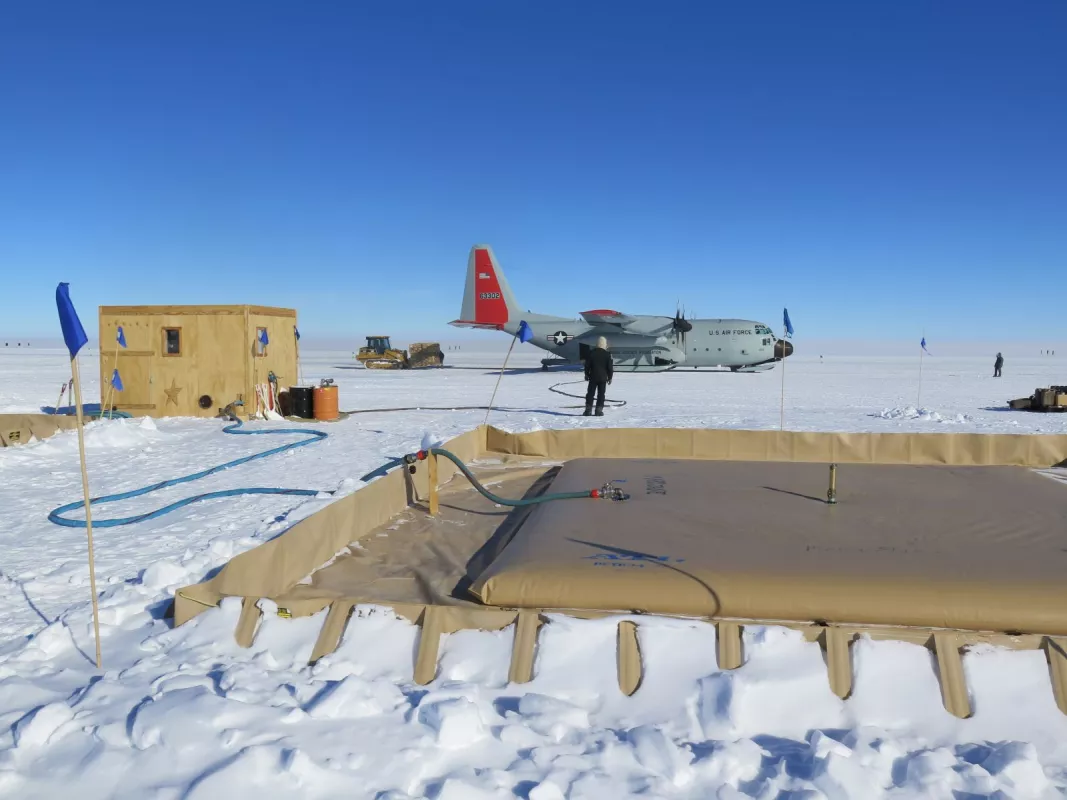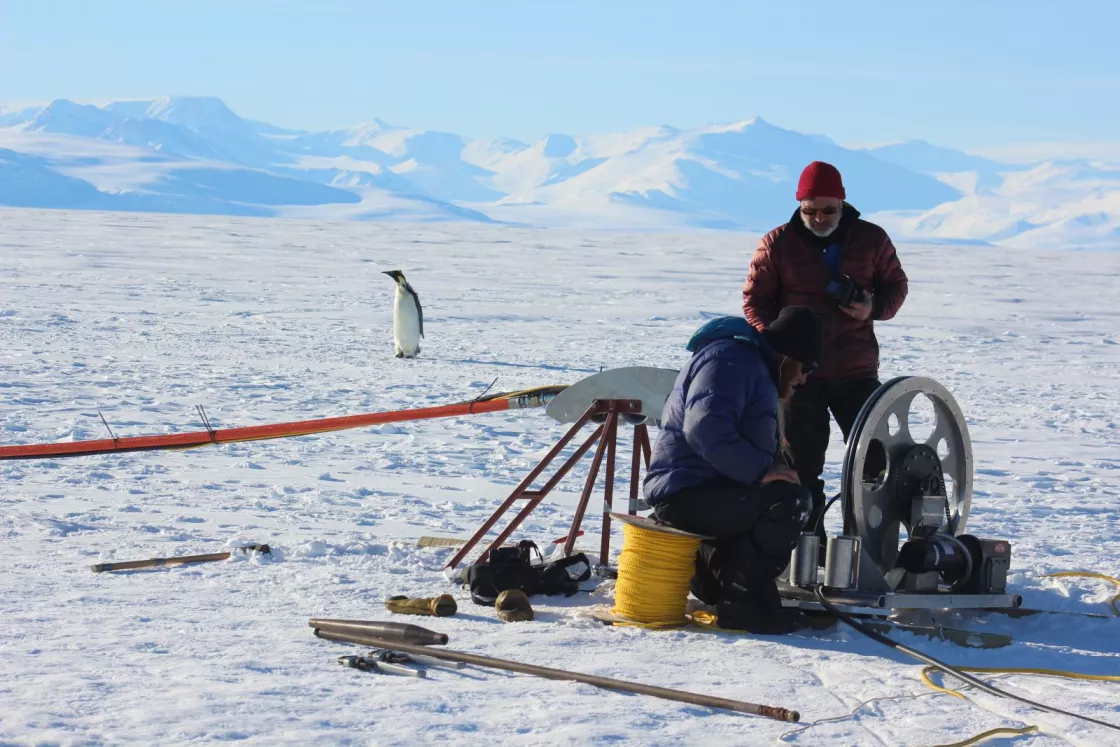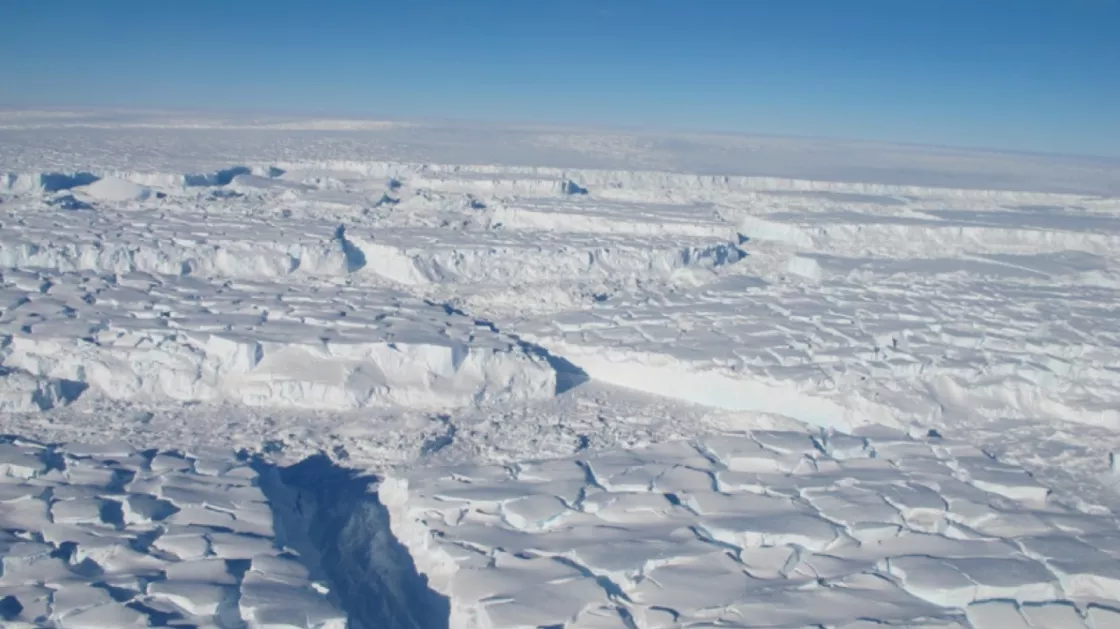By Laura Naranjo and Agnieszka Gautier
A group of researchers and logistic experts have descended on West Antarctica to begin a five-year study of Thwaites Glacier. The project, known as the International Thwaites Glacier Collaboration, is supported by the US National Science Foundation and the UK’s Natural Environment Research Council. It aims to better understand the glacier's dramatic ice loss and potential impact on sea level rise. In early January 2019, airlift support and two ice-capable cargo ships brought essential fuel, food, and gear to support the team of about 100 scientists, who want to better understand a glacier the size of Florida or Great Britain.
Researchers will deploy instruments over, under, and all around the ice shelf, where the glacier’s massive ice tongue floats out onto Pine Island Bay, part of the Amundsen Sea. The ocean will also be surveyed by traditional instruments and by the local seal population, carrying small packs of instruments.
Thwaites glacier buttresses the sprawling West Antarctic Ice Sheet (WAIS), acting as a brake for West Antarctic ice flowing into the ocean. “Thwaites is a very broad glacier that reaches deep into the West Antarctic Ice Sheet,” said Ted Scambos, research scientist at the Cooperative Institute for Research in Environmental Sciences (CIRES) and NSIDC. Without buttressing glaciers, the WAIS could send an additional 3 meters (10 feet) of melt water into the oceans over the next two centuries, doubling the current estimates. Thwaites Glacier and the surrounding coastal region alone could raise sea levels by half a meter (1.6 feet) within 100 years. Like several other West Antarctic glaciers, Thwaites is rapidly losing ice, and with it, the ability to hold back rising seas.
Warming, fracturing, melting
Multiple studies show that, overall, Antarctica is losing ice. “West Antarctica has the clearest signal in terms of mass loss,” Scambos said. “East Antarctica may be gaining mass, but not enough to counteract mass loss in West Antarctica.” Studying the processes that lead to ice loss on Thwaites could provide clues about when and how much sea level might rise. On Thwaites Glacier, researchers will examine two processes that dominate Antarctic ice melt: warming air temperatures and warming ocean water. “Why are the two processes happening? And are they linked?” Scambos said.
Warm air melts the ice surface, creating melt ponds atop the ice shelf. Surface water can then fracture the shelf as it drains down through cracks and crevasses. Hydrofracturing can occur very quickly, within a few months, according to Scambos. In fact, this process contributed to the Larsen B Ice Shelf disintegration on the Antarctic Peninsula in 2002. At the same time, ocean temperatures around Antarctica are rising, and warm water laps deep into the fjords underneath each glacier’s floating shelf. “Warm water reaches into the very same channels that the glaciers have cut into the bedrock, melting glaciers from the underside,” Scambos said.
Waiting on Thwaites
Researchers will participate in eight research projects as part of the collaboration. Scientists will set ocean moorings and deploy instruments from an icebreaker, place instrument packs on seals, conduct aircraft overflights, gather satellite data, and traverse the glacier’s ice. In additions to co-leading the Thwaites Science Coordination Office (SCO) with Professor David Vaughan of British Antarctic Survey, Scambos will work on a project that surveys and deploys instruments designed to collect weather conditions, GPS locations, photos, and ocean data to record changes both above and below the floating ice shelves near Thwaites.
Thwaites is one of a handful of glaciers holding back the WAIS, but researchers consider it a linchpin for ice sheet stability. The accelerating trend of Thwaites's ice loss increases the risk of sea level rise. This is the largest project that the UK and US have undertaken together since they began exploring the continent, and its researchers hope to understand more about the processes nibbling away at Antarctica’s ice.
References
Gardner, A. S., G. Moholdt, T. Scambos, et al. 2018. Increased West Antarctic and unchanged East Antarctic ice discharge over the last seven years. The Cryosphere 12: 521-547. doi:10.5194/tc-12-521-2018.
Scambos, T. A., R. E. Bell, R. B. Alley, et al. 2017. How much, how fast?: A science review and outlook for research on the instability of Antarctica’s Thwaites Glacier in the 21st century. Global and Planetary Change 153: 16-34. doi:10.1016/j.gloplacha.2017.04.008.
For more information
How much, how fast? A decadal science plan quantifying the rate of change of the West Antarctic Ice Sheet now and in the future.
Paving the way for a runaway
US and UK plan "Thwaites invasion" in Antarctica


